Pavilion 21 MINI Opera Space
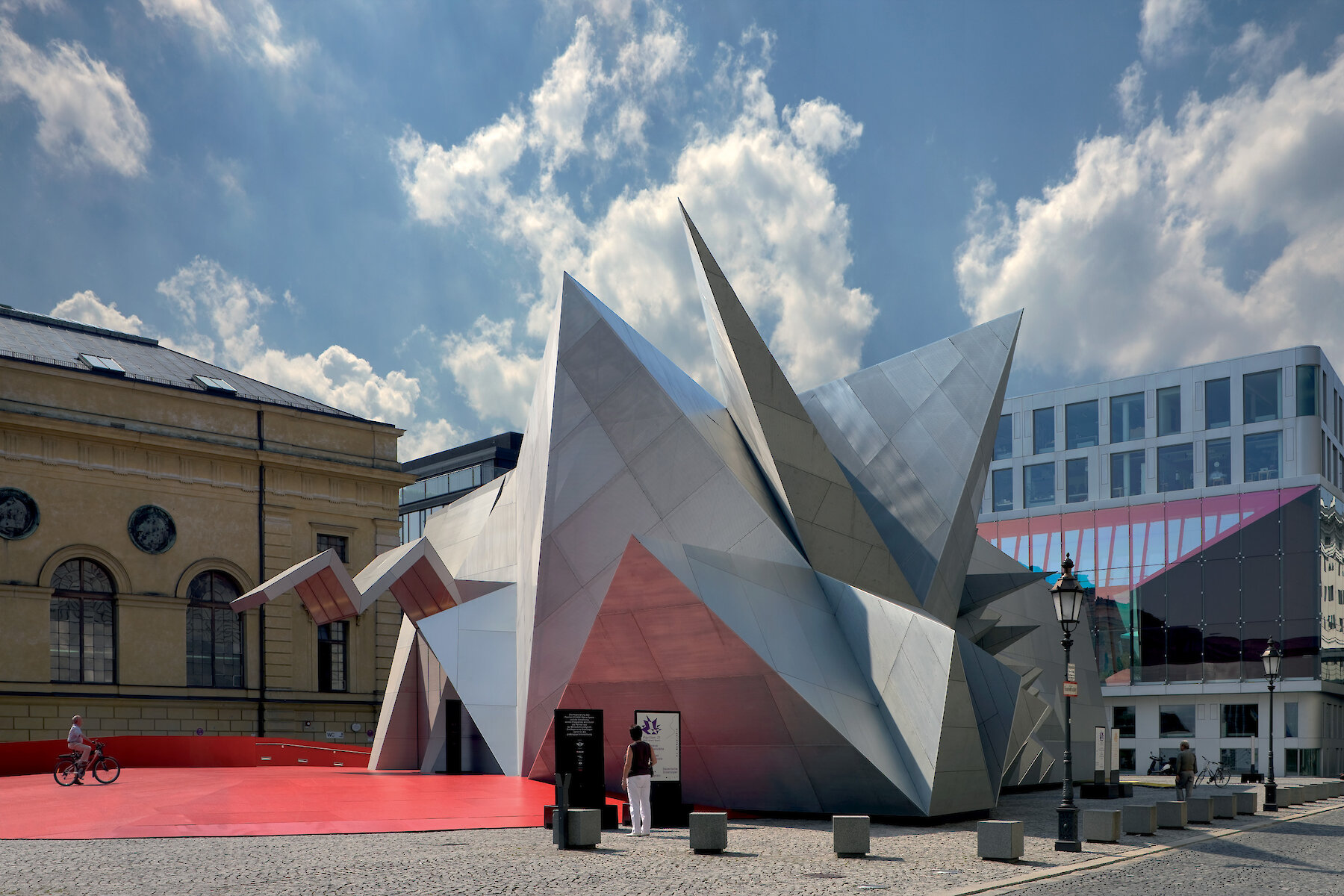
Temporary Mobile Perfomance Space
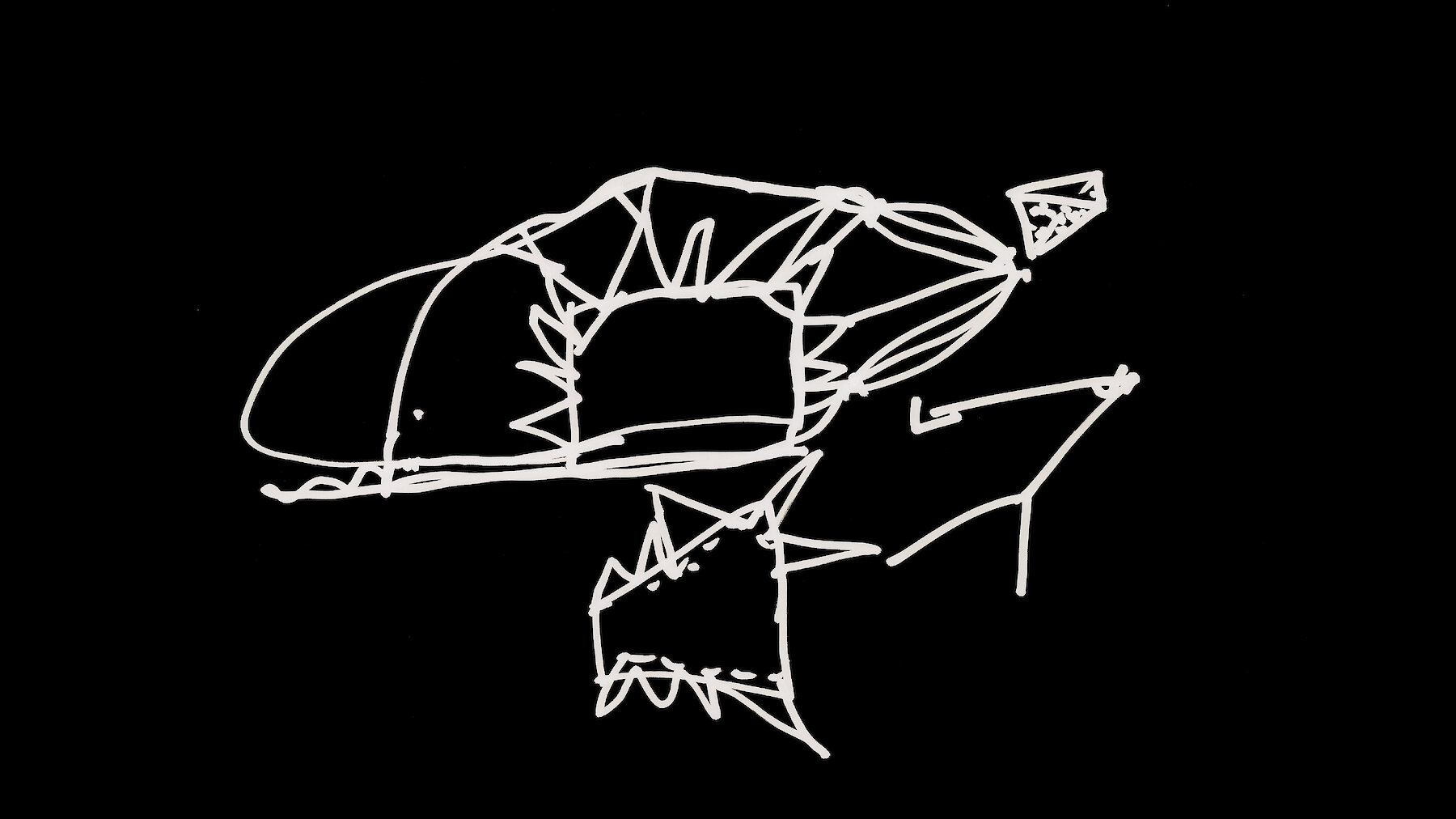
Sketch by Wolf dPrix
Coop Himmelb(l)au
Project info
The Pavilion was created as a temporary mobile space for experimental performances of the Bavarian State Opera in Munich. The dismountable structure offers place for 300 sitting or 700 standing spectators and can be transported in normal freight containers.
Its modular construction makes it possible to remount the pavilion on any site and to adapt it to particular needs.
Mass, hence weight, are the decisive criteria for good acoustics. The conception of the Pavilion 21 MINI Opera Space therefore had to overcome a contradiction: to design a lightweight construction, which could be dis- and re-assembled quickly, but which at the same time meets the acoustical requirements of a concert hall.
How do you create the conditions for good acoustics despite a reduction of mass? The first drawings already show the basic idea of the Pavilion, which is to introduce architectural elements that are on the one hand the spatial transformation of sound sequences, and on the other hand develop sound reflecting and absorbing properties through their pyramid-like shape: a soundscape.
Acoustics & Soundscaping
The strategy to achieve soundscaping comprises three steps: Firstly, to realize the shielding effect between plaza and street, secondly, to shape the geometry of the Pavilion in such a way that the surface deflects noise, and thirdly, to design the surface of the Pavilion in such a way that it reflects and absorbs sound.
In cooperation with the London based acoustic consultant Arup, acoustic pyramids have been developed for the façade, which rise in all directions and – thanks to their special geometry – absorb and reflect the street noise to create a ‘zone of silence’. Beside this function, the pyramids also have an effect on the vibration of the structural elements and therefore on the acoustic in the concert hall.
The design of the pyramids resulted from the abstraction of music into spatial form. As a starting point, a sequence from the song “Purple Haze” by Jimi Hendrix and a passage from “Don Giovanni” by Mozart were transcribed. Through the analysis of frequency sections from these pieces of music and in combination with the computer generated 3D model, the sequences are translated into pyramidal “spike constructions” by means of parametric “scripting”. Music becomes space.
The idea to combine architecture with music is not new. Also the term soundscaping is not new. Like landscaping, it involves the notion of “Gestalt”. Soundscaping originates in the 1940s and designates a method of composing. In architecture, Le Corbusier and Iannis Xenakis together engaged in the topic of music and architecture when they thought about three-dimensional implementation of musical compositions (Le Corbusier’s Philips Pavilion and the partition of the windows in La Tourette).
Light Installation
Towards the street and Marstall square, the outer shell is detached from the tilted double-layer façade and opens an interstitial space that offers a weather-protected lounge and bar area. The accessible, crystal-like double skin, transcribed music, forms a transitional space from the plaza to the entrance and into the main performance space. A folded and cantilevered roof emphasizes the main entrance.
The architectural design of the inner space is complemented and enhanced by an installation in the lounge developed by cat‑x. The complex multiple projection not only illuminates the interior of the lounge, but also interacts with the sounds coming from the concert hall. These light movements change the perception of the space, the architecture seems to move.
Project insights
Soundscaping & design development
Coop Himmelb(l)au

Duccio Malagamba
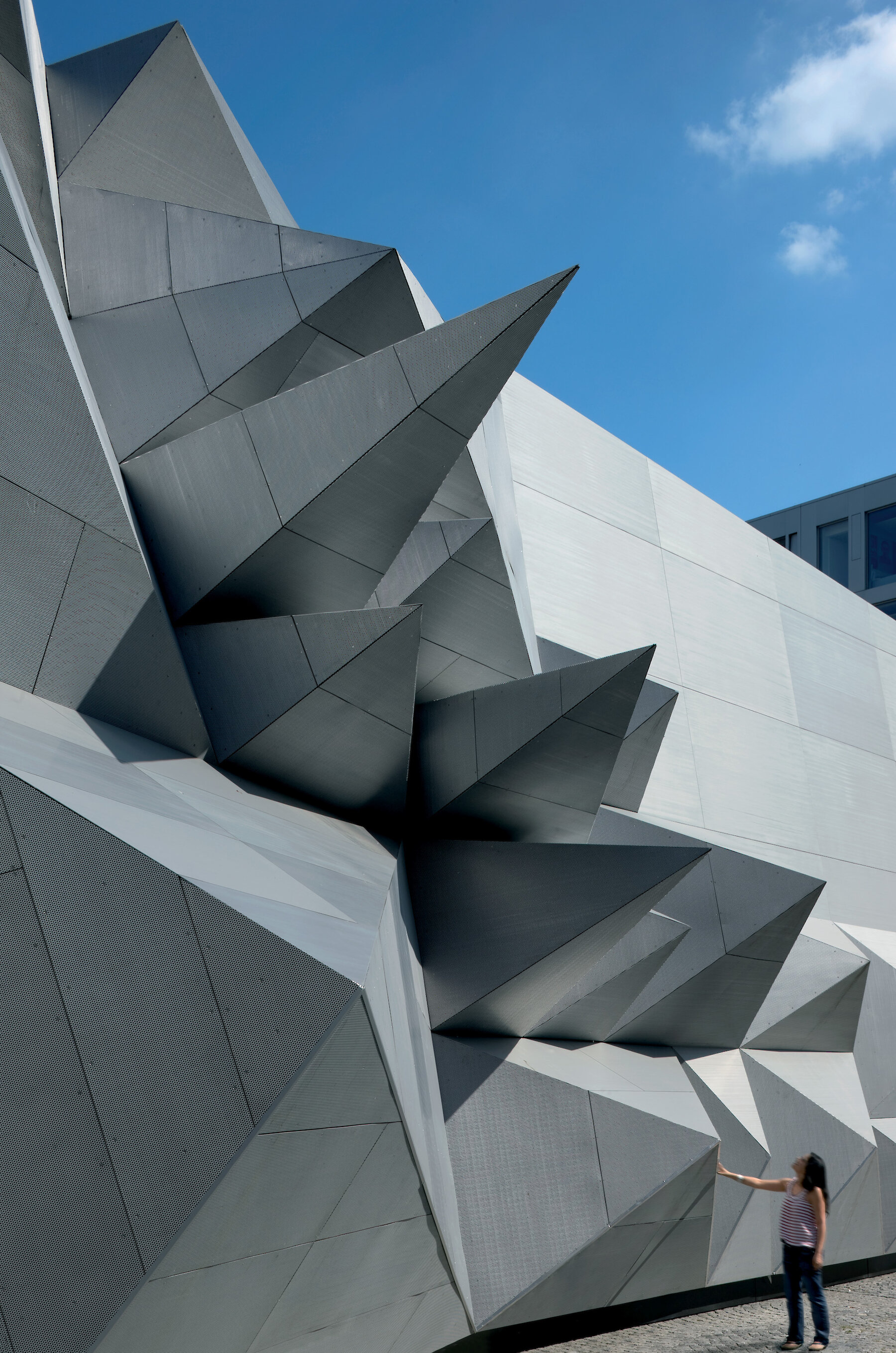
Duccio Malagamba

Duccio Malagamba
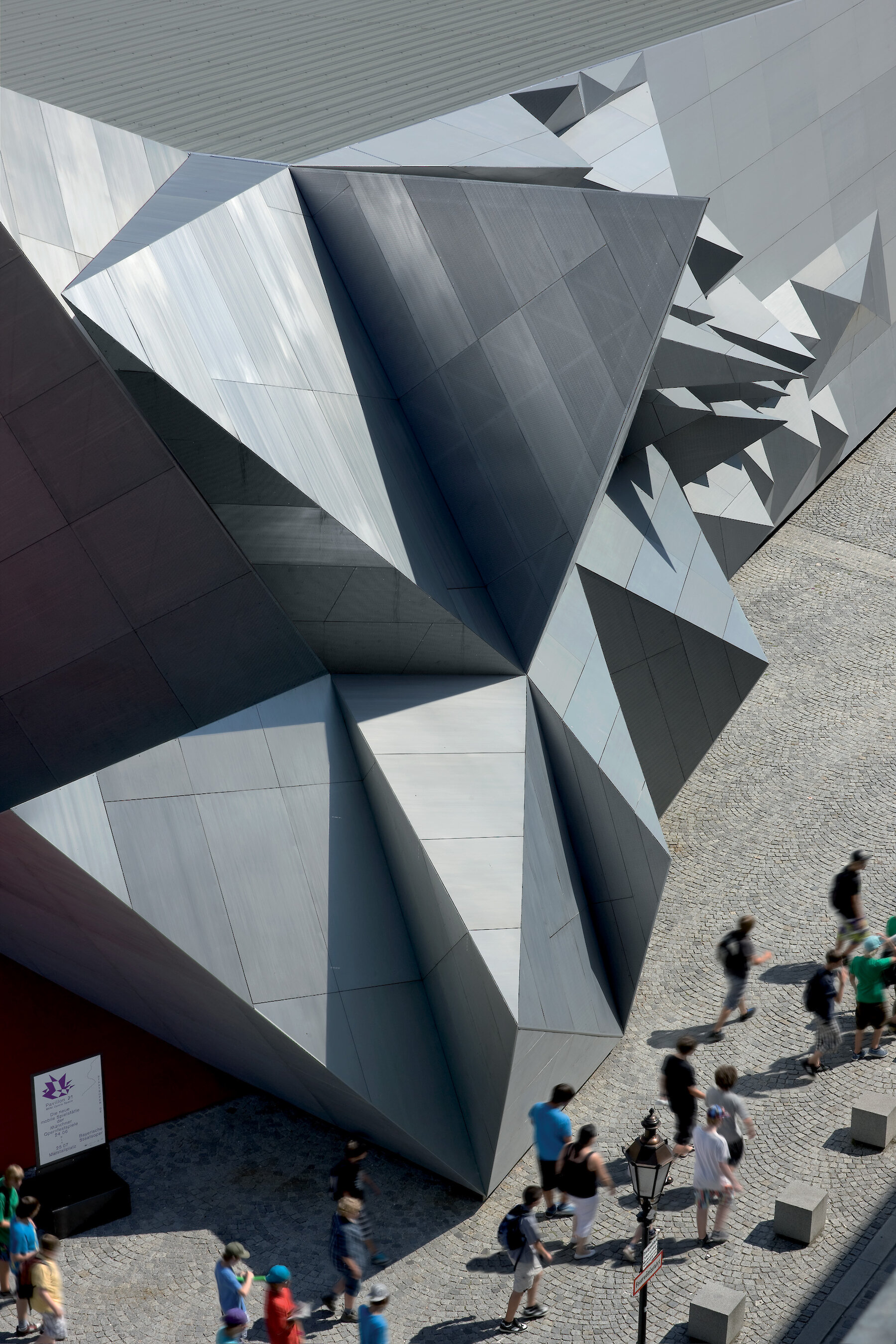
Duccio Malagamba
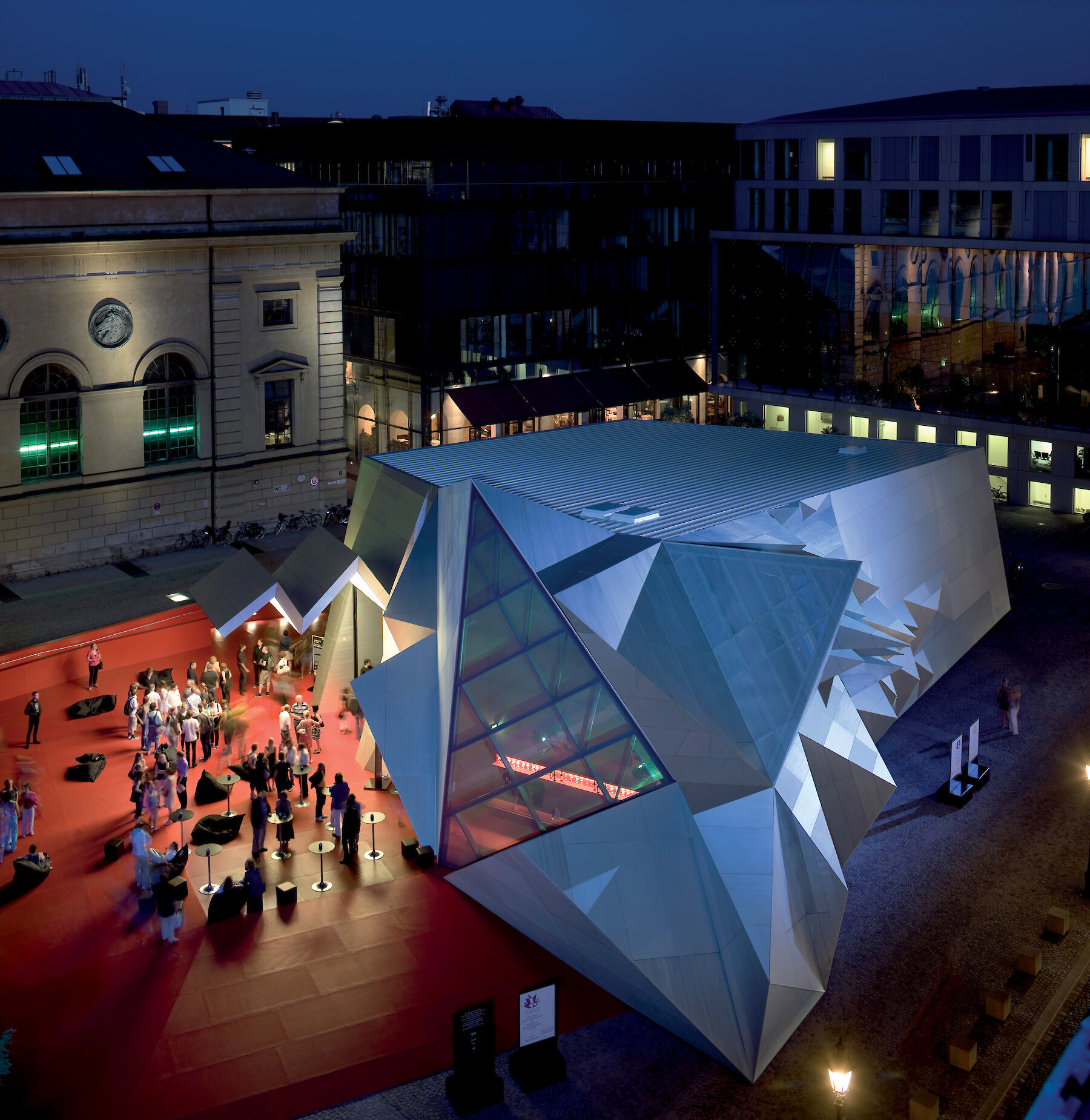
Duccio Malagamba
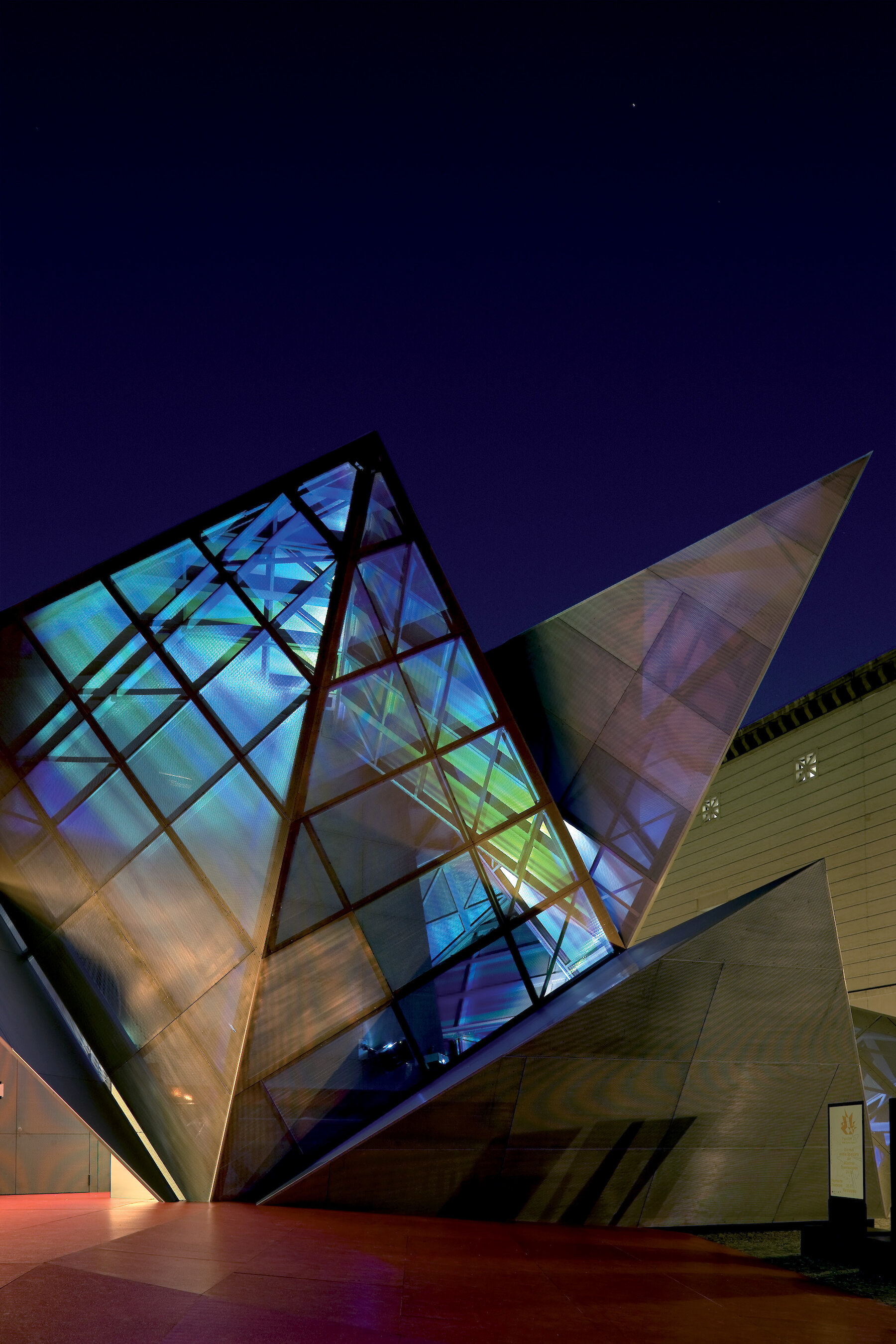
Duccio Malagamba
- Location
- Munich, Germany
- Client
- The Free State of Bavaria represented by The Bavarian State Opera, Munich, Germany
- Study
- 2008
- Start of planning
- 2009
- Start of construction
- 2010
- Opening
- 2010
On the map
Related projects
House of Music
Aalborg, Denmark
2008–2014


Expo.02 Forum Arteplage
Biel, Switzerland
1999–2002




